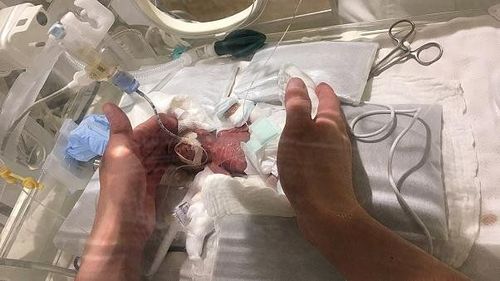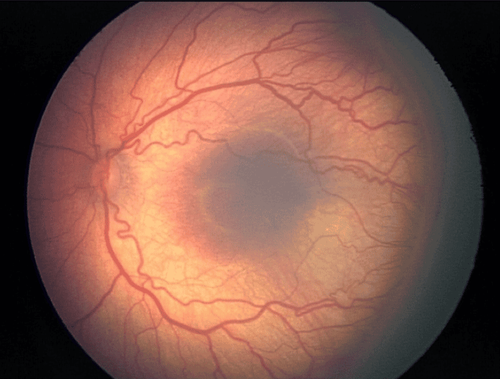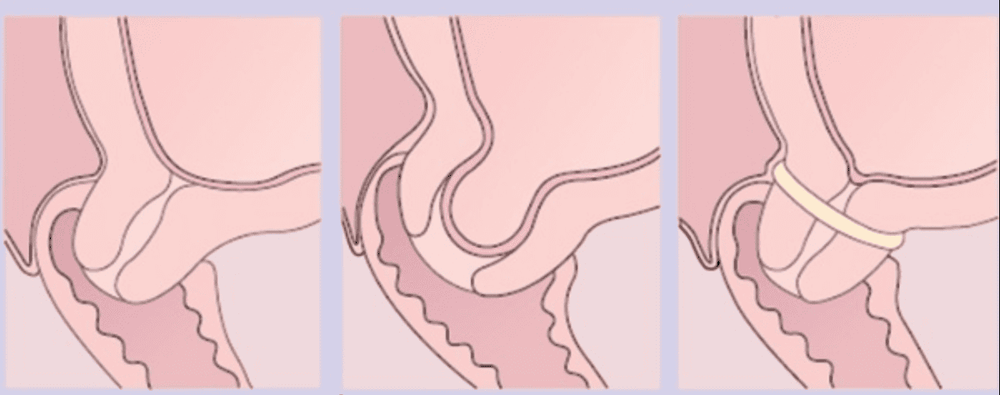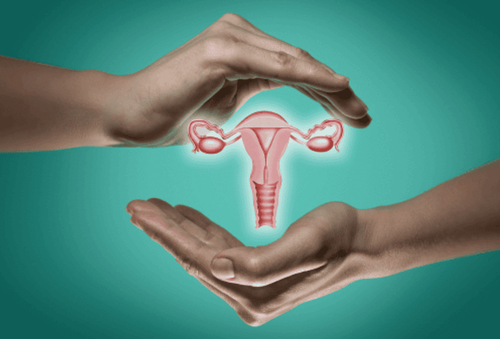This is an automatically translated article.
The article is made by Specialist Doctor II Cao Thi Thanh - Pediatrician - Department of Pediatrics - Neonatology - Vinmec Hai Phong International General Hospital.
Premature birth is the cause of nearly half of all infant deaths worldwide. This cause is ranked second in the risk of death for children under 5 years old only after pneumonia.
1. Overview
According to data of the World Health Organization (WHO): every year, worldwide, approximately 15 million babies are born prematurely and this number is still increasing every year. Premature births account for an average of 5% to 18% of births in 184 countries worldwide. In 2015 alone, approximately one million infants died of premature birth and what is remarkable here is that three-quarters of those unlucky babies could have continued to live thanks to interventions. medical card.
Premature birth is a global phenomenon and is not exclusively associated with less developed countries. Brazil and the US are two good examples. Although not two less developed countries, both countries are in the top 10 countries with the highest number of premature babies. Specifically, in the US, the rate of premature babies is 12%. In Vietnam, a developing country, this rate also tends to decrease, contrary to the general trend of Asia, Europe and North America.
In developed countries, the age of the mother, the number of pregnancies, the cesarean section and the use of drugs... are the main reasons for the high rate of premature birth. In less developed countries, the main causes of preterm birth can include: infection, malaria, HIV, teenage pregnancy. However, there are still cases outside of the above factors that still cannot be explained.

2. What is preterm birth?
WHO definition, premature babies will be divided into 3 levels:
Preterm: Babies born between 32 and 37 weeks – account for 84% of the total number of premature babies (12.5 million). The majority of them survive, possibly with supportive care. Very preterm: Babies born between 28 and 32 weeks. These babies need more supportive care and many of them will still be able to survive. Extremely preterm: Babies born before 28 weeks. These babies need aggressive treatment to survive. In developed countries, babies born extremely prematurely have a 90% chance of survival, even if they suffer from sequelae. In less developed countries, the chance of survival is only about 10%. Preterm birth is also divided into two categories:
Birth due to risk of premature labor or premature rupture of membranes. Compulsory birth under the doctor's orders. Usually occurs because the mother's health is not guaranteed or the fetus is in danger such as pre-eclampsia.
Trắc nghiệm: Thế nào là trẻ sơ sinh non tháng?
Trẻ sơ sinh non tháng rất cần được chăm và điều trị thật tốt để giúp giảm nguy cơ gặp phải các di chứng về tinh thần, vận động và sự phát triển sau này. Cùng theo dõi bài trắc nghiệm dưới đây để có thể nhận biết trẻ sơ sinh non tháng và có thêm kiến thức chăm sóc, nuôi dưỡng tốt nhất cho trẻ.The following content is prepared under supervision of Thạc sĩ, Bác sĩ y khoa, Ma Văn Thấm , Nhi , Phòng khám Đa khoa Quốc tế Vinmec Dương Đông(Phú Quốc)
3. Early risk of premature babies
Immediately after birth, premature babies can have the following health problems:
Anemia: Premature babies in intensive care units must have blood drawn regularly to monitor their health. . This generally leads to the fact that they cannot regenerate enough and promptly the amount of blood lost in the process of taking blood for testing, thus causing anemia. Anemia causes oxygen saturation and low blood glucose levels, making the body's organs unable to function properly.

Respiratory problems such as: Apnea of prematurity: The baby stops breathing for 15 to 20 seconds or more, it can happen at the same time as bradycardia. Bronchopulmonary dysplasia: This lung disease occurs in premature infants requiring mechanical ventilation. Children with this condition are often at a higher risk of developing lung disease than other children, and can sometimes develop lung damage. Respiratory Distress Syndrome: Often children get this syndrome because their lungs can't make enough surfartant, which expands the lungs. Infections: Because of their immature immune systems, premature babies are much more susceptible to infections than healthy babies.
Intraventricular hemorrhage: The earlier the baby is born, the higher the incidence. Jaundice: Jaundice in premature babies is often more severe and lasts longer than in term babies. Jaundice caused by a buildup of bilirubin in the blood. This shows that the baby's liver is not fully developed or not working properly. Necrotizing enterocolitis: This is a very serious disease that affects a child's small intestine. When a child has this disease, it means that the intestinal parenchyma is damaged or begins to necrosis. Patent ductus arteriosus is a congenital heart defect in which the ductus arteriosus (a vessel that connects the pulmonary artery to the descending aorta) fails to close. If not treated promptly, it can lead to pulmonary hypertension, arrhythmia (irregular heartbeat) and congestive heart failure Retinopathy of prematurity (ROP) : A vision disorder amblyopia - often developing in both eyes - is one of the most common causes of vision loss in children and can lead to lifelong vision impairment and blindness

4. Late risk of premature babies
In addition to the health risks after birth, premature babies face long-term health risks into adulthood.
Those risks could be:
Cerebral palsy : Includes dyskinesia - muscle tone, which can be caused by infection, reduced blood flow or brain injury of premature babies. Poor schooling: Premature babies are more likely to lag behind their full-term peers. Vision problems: Retinopathy of prematurity can cause vision loss for many years and even blindness if left untreated. Hearing problems: Even if premature babies are screened for hearing before they leave the hospital, there is still a potential risk of long-term hearing loss. Dental problems: Babies born prematurely are at risk for problems with tooth development, such as delayed teething, discolored teeth, and improperly erupting teeth. Behavioral and psychological problems: Premature babies may be more likely to have some behavioral or psychological problems as well as mental retardation than full-term infants. Chronic health problems: Premature babies are more likely to have chronic health problems - some of which may require hospital care - than full-term babies such as infections, asthma and eating problems. Babies born prematurely are also at risk for sudden infant death syndrome (SIDS).
5. Methods of saving premature babies
Experts say that too modern and expensive measures are not the only solution to save the lives of premature babies. There are still simple, effective and low-cost intervention techniques that contribute to saving premature babies' lives such as:Prenatal steroid injections for mothers in early labor. This method only costs an average of 1 $ / nose. This helps with fetal lung development and prevents breathing problems.

“Kangaroo Care” - Kangaroo care: Newborns have direct skin-to-skin contact with their mothers. Keeping the baby warm through the mother's warmth is good for the baby, making it easier for the baby to digest and monitor the baby. Antibiotics to prevent and fight infection, an important cause of infant mortality. Exclusive breastfeeding.
6. Measures to prevent premature birth
Many factors that lead to preterm birth have been identified including: Maternal history of preterm birth, low birth weight, obesity, diabetes, high blood pressure, smoking, infections, maternal age (under 17 or over 40), genetic factors, multiple pregnancies (twins, triplets, and more), and too close of a pregnancy interval.
However, there is not any interaction between these factors with each other and between them and other environmental and social factors as proven by scientific studies.
Thus, while waiting for the clearest and most scientific answer, measures to screen, care for and monitor women's health before giving birth are effective measures to help prevent this condition. premature birth.
For women at high risk, a number of medical interventions are considered to help them avoid preterm birth including:
Progesterone supplements : For women with a history of preterm birth, a short cervix or both factors. Cervical suture: Applicable to women with a short cervix or a history of cervical insufficiency.

Although a common phenomenon, premature birth has many potential dangers in it, not only for the health of the premature baby but also for its future. A premature baby who survives can still face health risks into adulthood.
For these reasons, it becomes very important to take precautions for pregnant women, especially those carrying a high risk of preterm birth. A healthy baby, born at 39 weeks of pregnancy always deserves the wait of family and society.
Even when prevention of preterm birth becomes unavoidable, there are many cost-effective and common medical interventions available to prevent premature infants from experiencing immediate health risks and Castle.
And the last really important thing is that the knowledge about prevention and treatment of preterm birth needs to be widely disseminated among medical staff: from midwives, nurses to doctors, specialists. This necessity must be given priority commensurate with the danger of a phenomenon deadly second only to pneumonia.
The Maternity Package at Vinmec International General Hospital helps customers complete antenatal check-ups and necessary tests during pregnancy, in order to minimize the risk of preterm birth. Customers registered for Maternity Package are fully cared for and checked for health of mother and baby before birth - during childbirth and after birth, fully and conscientiously.
Currently Vinmec International General Hospital is offering maternity packages including:
Maternity care program 2019 – Labor Maternity care program 2019 – 36 weeks Maternity care program 2019 – 27 Week Maternity Care Program 2019 – 12 weeks
Please dial HOTLINE for more information or register for an appointment HERE. Download MyVinmec app to make appointments faster and to manage your bookings easily.















